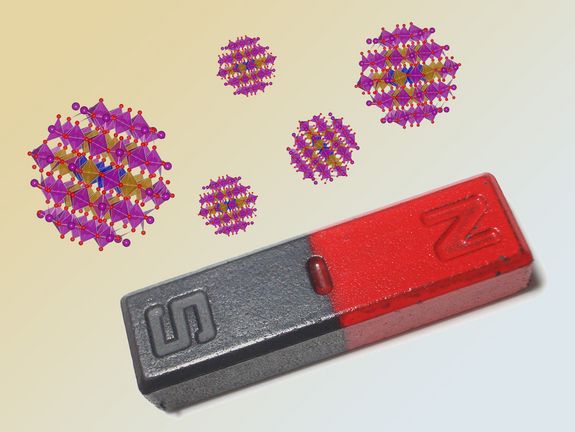A little piece of iron wire is magnetic – just like a huge iron rod. When it comes to material properties, size usually does not matter. Surprisingly, researchers from Austria and India have now discovered that some materials show very unusual behavior, when they are studied in the form of tiny crystals. This could now lead to new materials with tailor-made electronic and magnetic properties.
Different Size Changes Material Properties
Material properties such as electrical conductivity, magnetic properties or the melting point do not depend on an object’s size and shape. “In India, however, an experiment recently showed that special manganese oxides – so called manganites – exhibit completely different properties, when their size is reduced to tiny grains”, Karsten Held explains.
A team of scientists from the Vienna University of Technology (Austria) and the S.N. Bose National Centre Kolkata (India) investigated this phenomenon – and the new effect could be explained in computer simulations. In a crossover from large crystals to smaller crystals, the distribution of the electrons changes, and so does their energy. This, in turn, changes the electrical and magnetic properties of the crystal. “The phenomenon of quantum entanglement plays a very important role here”, says Professor Karsten Held. “We cannot think of the electrons as classical particles, moving independently of each other, on well-separated paths. The electrons can only be described collectively.”
By changing their size, the properties of the manganite-crystals can now be harnessed. Larger crystals are insulators, and they are not magnetic. Tiny crystal pieces on the other hand turn out to be metallic ferromagnets.
Important for Industrial Applications
Phase transitions, at which important material properties change, play a major role in technological applications: “When data is read from a hard-drive with a reading head, a transition between a conducting and a non-conducting state is used”, Karsten Held explains. Similar effects can be seen in manganite crystals: “We knew that magnetic properties of manganites depend on the temperature and the magnetic field”, says Tanusri Saha-Dasgupta, a material scientist at the S.N. Bose National Centre Kolkata . “But now we know that these transitions can also be controlled by altering the size of the crystals.” By changing the granular size of the crystals, the scientists can influence the critical temperature and magnetic field strength, at which the phase transition takes place. For technological applications, this opens up exciting new possibilities.
Huge Computational Effort
The manganite crystals studied by the Austro-Indian research team are only some three to fifteen billionths of a meter wide – but still they consist of hundreds or thousands of atoms. Simulating their behavior on a computer is therefore still a great challenge. “The quantum mechanical equations we are dealing with here can only be solved with extremely powerful computer clusters”, says PhD-student Angelo Valli. “Fortunately, the computer cluster VSC at the Vienna University of Technology provides us with remarkable computing power.”
Euro-Indian Cooperation
The research project is a part of the Monami-program, in which the cooperation of European and Indian research teams in the field of computational material science is being promoted – for example by funding Angelo Valli’s stay in Calcutta. “Both Europe and India have very strong research teams in this field – both sides benefit from this cooperation”, Karsten Held and Tanusri Saha-Dasgupta assure.
Picture Download: <link dle pr aktuelles downloads manganat>www.tuwien.ac.at/dle/pr/aktuelles/downloads/2011/manganat/
The Monami-Project: <link http: www.iacs.res.in monami home.html>www.iacs.res.in/monami/Home.html
Original Publication: <link http: prl.aps.org abstract prl v107 i19 e197202>prl.aps.org/abstract/PRL/v107/i19/e197202
Further Information:
Prof. Karsten Held
Institute for Solid State Physics
Vienna University of Technology
Wiedner Hauptstraße 8
T: +43-1-58801-13710
<link>karsten.held@tuwien.ac.at
News articles
Big Success with Tiny Cristals
Tiny crystals exhibit unexpected properties. Researchers from the Vienna University of Technology and the S.N. Bose National Centre Kolkata can now explain why.

1 of 2 images or videos
Magnetism - large and small
Magnetism - large and small

1 of 2 images or videos
Angelo Valli, Prof. Tanusri Saha-Dasgupta, Prof. Karsten Held
Angelo Valli, Prof. Tanusri Saha-Dasgupta, Prof. Karsten Held